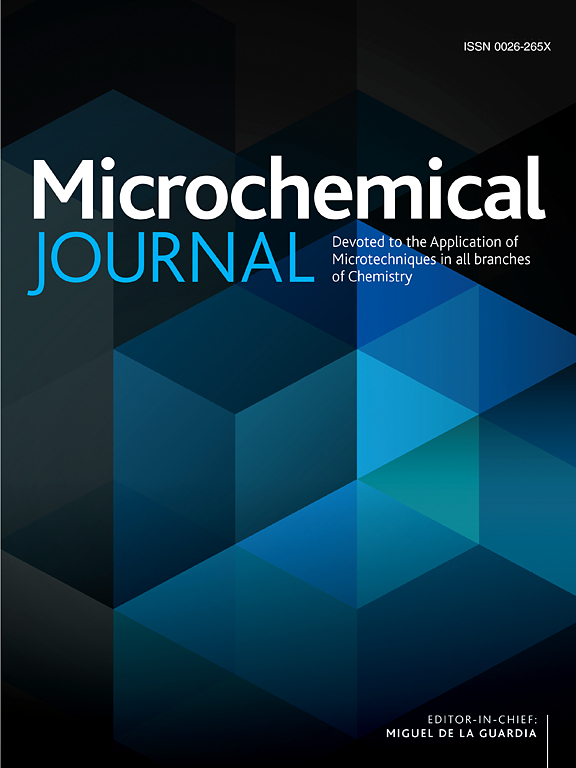RAA-CRISPR/Cas13a-assisted lateral flow strip for Feline herpesvirus Type I point-of-care testing
IF 4.9
2区 化学
Q1 CHEMISTRY, ANALYTICAL
引用次数: 0
Abstract
Feline herpesvirus type 1 (FHV-1) is the major pathogen of feline upper respiratory tract disease (URTD) and ocular disease, accounting for approximately 50 %–75 % of URTD in susceptible cats. However, similar clinical symptoms of URTD were present in the early stages of URTD, which makes it difficult to determine the pathogens with the naked eye. For that, there are a variety of nucleic acid detection methods have been established for FHV-1 determination in past years. However, they need complicated thermal cycling, specialized instruments, long detection time, brings false results risk and etc, which is not suitable for point-of-care testing. Therefore, this study developed a new nucleic acid detection method depending on recombinase aided amplification (RAA) (37 °C, 25 min), CRISPR/Cas13a trans-cleavage (37 °C, 20 min) and lateral flow strip (room temperature, 3 min). Firstly, the recombinant plasmid DNA, crRNA, and RAA primer pairs targeting the FHV-1 UL23 gene were designed and prepared. Secondly, the nucleic acid was extracted by lysis buffer and simple centrifugation. Thirdly, FHV-1 RAA nucleic acid amplification reaction was performed followed by CRISPR/Cas13a trans-cleavage report RNA and lateral flow strip visual detection. As a result, the present assay showed high specificity towards FHV-1 without cross-reactivity with other pathogens resulted in URTD and high sensitivity with the limit of detection at 0.768 copies/μL for the FHV-1 UL23 gene. Furthermore, clinical samples application was conducted for 24 clinical swab samples collected from cats with URTD using the present assay and the reference fluorescent quantitative PCR method simultaneously. As we expected, the results of the present assay were in exceptional concordance with the reference fluorescent quantitative PCR method. Accordingly, the present RAA-CRISPR/Cas13a-assisted lateral flow strip was developed for the rapid, ultra-sensitive, simple-operation, relible, visual and point-of-care testing of FHV-1, which ensures FHV-1’s rapid diagnosis in the early stages of infection and support a appropriate treatment on time in resource-limited field.

求助全文
约1分钟内获得全文
求助全文
来源期刊

Microchemical Journal
化学-分析化学
CiteScore
8.70
自引率
8.30%
发文量
1131
审稿时长
1.9 months
期刊介绍:
The Microchemical Journal is a peer reviewed journal devoted to all aspects and phases of analytical chemistry and chemical analysis. The Microchemical Journal publishes articles which are at the forefront of modern analytical chemistry and cover innovations in the techniques to the finest possible limits. This includes fundamental aspects, instrumentation, new developments, innovative and novel methods and applications including environmental and clinical field.
Traditional classical analytical methods such as spectrophotometry and titrimetry as well as established instrumentation methods such as flame and graphite furnace atomic absorption spectrometry, gas chromatography, and modified glassy or carbon electrode electrochemical methods will be considered, provided they show significant improvements and novelty compared to the established methods.
 求助内容:
求助内容: 应助结果提醒方式:
应助结果提醒方式:


